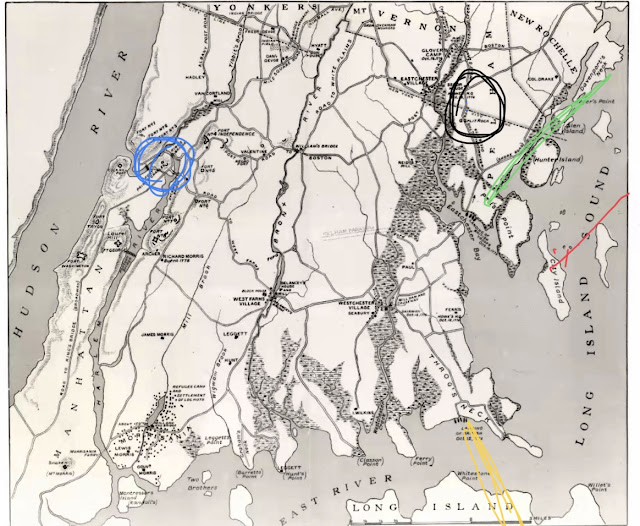I. TRAVEL
Thirteen of the 42 days in this period were out of state. First a family wedding in landlocked Gainsville, FL. We saw some puddles but nothing to write home about. Next was a visit to our friends, Marie and Tom, in Las Vegas NV, again landlocked but near enough to Hoover Dam for a visit to that behemoth engineering miracle which created Lake Mead behind it.
The lake had some marinas but unfortunately a real drought, caused by both lesser western rainfall and greater human and farm extraction of water has left the lake/reservoir only 38% full with a 140 foot high white stripe around its rim.
The third destination was Portland Oregon, to visit my daughter and the town of Astoria, near the mouth of the mighty Columbia River with its frequently shifting bar making it a killer of ships trying to enter or leave during storms when wind and tide oppose. We drove into Washington State on the two lane bridge (one each way) across the River, with a high arch over the channel on the Oregon side and then a much longer low causeway the rest of the way across the flats. (Think Tappan Zee Bridge). The highlight, other than being with my daughter, was Astoria’s Columbia River Maritime Museum. Good display of the exciting things about that particular waterway: fishing, navigation, history (think of Lewis and Clark’s destination) shipping and rescue work. Not much of sailing — though they did have a full size sailboat used for fishing. This was not my favorite of the 20 or so maritime museums I have visited, but provided a pleasant informative few hours.
I also took in the Portland Art Museum where I “curated” for my own pleasure, a show of three paintings in different rooms of the permanent collection. I called it “New England Places I Have Sailed”.
Isles of Shoals, 1907 by Childe Hassam.
After the Hurricane, 1938, by Marsden Hartley, with lobster pot thrown up onto the Maine rocks.
Provincetown Bay, 1950 by Helen Frankenthaler.
Also taking time and attention in this interval was being mindful of the horrific news out of Ukraine where Vlad, the destroyer, started a modern mechanized war of aggression against his neighbor to conquer the land and its people. And when the war news was south for his war machine he decided “well if I can’t possess it, I’ll destroy it.” Our wonderful president has been able to unite most of the free world to stop the aggression without getting us into WWIII, at least so far. This is how we won WWII: despite the horrible loss of American lives in that war, our losses were tiny compared to the losses of our Allie’s. We supplied the materials but they did the dying.
II. BOATWORK
Only seven days (only four hours per day) of boat work. It has been a light winter for boat work compared with years past. And made lighter by my willingness to pay others to do work that would likely have wrecked my rotator cuff, still healing from last summer, and thereby ruined the summer of 2022, had I done them myself. Chief among them are tasks that David of Marine Detailer and his crew will be doing next week: prepare the bottom for painting by scuffing up its surface with a maroon 3M plastic scrubbing pad, and compounding and waxing the freeboard. I will tape the waterline and apply the bottom paint (which cost more than $300 per gallon with tax this year!) The rear broad navy blue boot stripe that was carefully painted on a few years ago with Awlgrip has spots where the slapping of the water against the flat near horizontal surface has beaten away the “new” paint. My proposed solution is to obtain some scrap navy blue vinyl sheeting used to make boat names and, leaving no sharp corners on each patch, place the patches of this vinyl tape over the paint holes. I’m hoping that from five feet away, no one will notice the patchwork nature of this fix.
The prop and shaft, seen in the last post were sanded quite clean, primed and covered with three coats of ridiculously expensive Marlin, Velex Plus anti fouling paint — imported from Italy! The bleached out port side interior woodwork was sanded down, stained to its original vivid cherrywood color and has gotten its first coat of protective polyurethane.
The winter covers were removed, the forward half, with its hole for the mast (to the left in the photo) was folded up neatly and placed in the locker in exchange for the small jib which is now aboard and has to be bent on in case of emergencies with the potentially balky Diesel engine during the short passage from the Huguenot to the Harlem.The lighter color in the center of the cover is where it has lain flat in the bleaching winter sun for 20 of the last 23 years. The darker parts at the sides are more vertical, at ILENE’s sides, where the cover gets less direct sunlight. The aft half of the cover suffered a zipper casualty: I could not remove it from the boat without cutting the zipper, and I took it to Doyle’s for a zipper transplant.
Doyle also has the Bimini. It needs patching along its front edge, not just for appearances but to prevent it from ripping out and flogging us at the worst time in a storm far from home. Here too, Doyle got some zipper work. The Bimini is held in place with seven stout zippers. But they need to be lubricated with special zipper grease (fancy Vaseline in a tube that emits a thin bead of it when squeezed). These zippers had been attached and zipped up maybe four of five years ago and I neglected them. By applying both the grease and elbow grease I was able to unzip five of them. The last two were more stuck and I used WD40 as well; but no luck and I had to pry (break) the slider off. Tanks to Dave for his help on this. The good news is that I think Doyle can slide new sliders on a lot less expensively than cutting out and replacing the entire zippers.
III OTHER RELATED ACTIVITY
Dinners 1) at home with Bennett and Harriett, 2) with our club member/cat sitters, Dave and Christine, 3) with our nephew and frequent sailor, Mendy at a steak house to celebrate his being licensed as an RN., and 4) with my book group, all but one of who have sailed with me, at our home to discuss a book set in Trieste, Italy, with foods and wines of Triestian design. Also a lunch in NJ with Roy, who lent me his Maine chart book after mine went missing. His is newer, having been obtained the day we departed from Robinhood Cove to the Harlem last spring on his ketch MS GALSJM last summer.
I enjoyed an extremely informative Free Zoom lecture about “The Bronx During The American Revolution. The speaker was the historian of the Bronx Historical Society and the heart of the action was very close to home. The British tried to capture what was left of George Washington’s army in Washington Heights, Northern Manhattan (where I grew up) before he could escape across the Kingsbridge, a narrow bridge a block from where Broadway crosses the Spuyten Duyvel from Manhattan to the Bronx, to go up to fight the battle of White Plains. The first amphibious landing was on Throggs Neck, where the NY State Merchant Marine Academy is now. The 4000 men were set to hike west across The Bronx to Highbridge, but they were unaware of the swampland they would have to cross, got bogged down, backed off, regrouped, and landed on the west side of Rodman’s Neck. That is the peninsula of land directly in front of our dock, where the Police firing range is today. The 4000 landed, again without opposition, but were confronted by about 750 colonists under John Glover with orders to retard their progress. His men hid behind a series of parallel stone fences. When things got too hot for them at one fence they repeatedly fell back to the next fence. This battle of Pells Point delayed the British advance long enough for Washington’s army once again to effect a Houdiniesque escape. This map shows the action: The red line points to the Harlem YC on City Island. The blue circle is Kingsbridge, the escape north from Manhattan. The Yellow lines point to the site of first landing and the green lines point SW to the second landing site in Eastchester Bay. Finally, the black circle is where the battle of Fells Point was fought.Back yard history that I had never known!
A membership meeting at the Club which almost did not come off due to a lack of a quorum, which in turn was due to the lack of controversial business, in fact the lack of any business at all. But our hard working Officers and Board had prepared reports on their recent accomplishments and near term plans. So we had the meeting anyway, without the quorum (except that “approval of the minutes of the prior meeting” — everyone’s favorite part of a meeting, right! had to be defered).
We had an open house to show the Club to anyone who might think about a good place to keep a boat. They drink our wine, taste our food and experience friendly members. I’m a lousy salesperson, except when I’m convinced of the superiority of the product in question. Met some interesting new members.
Our hard working Board member, Erin, tasked with both the social committee and the restaurant and bar committee has come up with some interesting events. Erin is a “social” member: lower dues, no boat -yet and no membership vote. We wisely amended the Bylaws a few years ago to permit up to two members of the Board (also known as “hard working unpaid servants of the members”) to be Social members. I’ve tried to pay Erin, in praise in lieu of cash, by telling her that with her dual portfolio she is, “Doing the work of two men!”
The Club’s St Patrick’s Day traditional Irish dinner — you know the menu — but more varied, plentiful and excellent. Thank you Chef Anne!
Before dinner, Erin arranged for a troop of young people and their leaders to entertain us with Irish Dancing. This picture shows the most essential element of their uniform: the smile. After their performance each dancer picked a partner from among us older sailors and we danced some square dance moves to the Irish music they brought. I believe that the last time we were entertained by such dance was perhaps 25 years ago, when Sean Doran was social chairman. The Club’s floors, underfoot, were recently refinished.
“Knot Night” was, to my knowledge, a never-before event that Erin dreamed up for us. Free admission and each person received a coffee mug decorated with knots and with a cleat for a handle, two lengths or line, a booklet prepared for the event from a thick treatise, illustrating how the most essential sailing knots are tied as well as a delicious Dark and Stormy and a tray featuring Anne’s Hors D’oeuvres.
Rear Commodore Doug led the class with John assisting at the rear, and several others who “know the ropes”, like me, unofficially assisting as well. Social, educational, eating and drinking: this event had it all!
Rear Commodore Doug led the class with John assisting at the rear, and several others who “know the ropes”, like me, unofficially assisting as well. Social, educational, eating and drinking: this event had it all!
My next post will be LESS than 42 days from now; I promise!














No comments:
Post a Comment